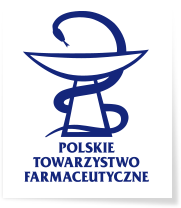Paulina Kaleta, Zuzanna Rzepka, Magdalena Janus, Dorota Małgorzata Wrześniok
Rak piersi: epidemiologia, klasyfikacja molekularna, postępowanie diagnostyczno-terapeutyczne
2024-02-03
Rak piersi jest jednym z najczęstszych typów nowotworów występujących w populacji kobiet. Szacuje się, że powoduje nawet do 15% zgonów związanych z chorobami onkologicznymi. Mimo rozwoju medycyny, wciąż brakuje skutecznych metod leczenia raka piersi, szczególnie w zaawansowanym stadium choroby. Niniejszy artykuł stanowi opracowanie wybranych, aktualnych informacji z zakresu epidemiologii, etiologii i diagnostyki raka piersi. Ponadto, opisano klasyfikację molekularną oraz dostępne strategie terapeutyczne wykorzystywane u pacjentek z nowotworem gruczołu sutkowego.
Najważniejszym krokiem w prewencji raka piersi jest zwiększenie świadomości pacjentek w kwestii samobadania i diagnostyki. Natomiast w przypadku terapii raka piersi wyróżnia się liczne rozwiązania, jednak wiele zależy od podtypu molekularnego nowotworu oraz stadium zaawansowania choroby. Podstawowym wyborem w przypadku wykrycia zmian wczesnych jest operacja oszczędzająca pierś lub mastektomia. Dla uzupełnienia zasadniczej terapii (tj. zabiegu chirurgicznego i radioterapii) stosuje się terapie adjuwantowe, do których należy chemioterapia, hormonoterapia i terapie celowane molekularnie. Dodatkowo w przypadku raka piersi potrójnie ujemnego stosuje się immunoterapię z wykorzystaniem przeciwciał monoklonalnych, którymi są inhibitory receptora programowanej śmierci 1 lub blokery antygenu 4 związanego z limfocytami T cytotoksycznymi. Zainteresowanie w kontekście wykorzystania w leczeniu pacjentek z rakiem piersi potrójnie negatywnym wzbudzają też inne metody immunoterapii, takie jak terapia z wykorzystaniem chimerycznych limfocytów T oraz szczepionek przeciwnowotworowych. Najgorzej rokującą postacią raka piersi jest zmiana dająca przerzuty do tkanek. W takich przypadkach rekomendowane leczenie systemowe obejmuje różne metody (terapię celowaną molekularnie, chemioterapię, hormonoterapię) stosowane samodzielnie lub w skojarzeniu.
Stosunkowo rzadszą sytuacją jest wystąpienie raka piersi w populacji mężczyzn. Niemniej jednak należy obserwować wszystkie niepokojące zmiany, gdyż późne rozpoznanie uniemożliwia efektywną terapię, która jest oparta o metody wykorzystywane w chorobie gruczołu sutkowego u kobiet.
Pomimo wielu strategii terapeutycznych obecnie stosowanych w lecznictwie, odsetek zgonów wśród pacjentek z zaawansowanym rakiem piersi wciąż jest niepokojąco wysoki. Problemem jest brak reakcji na leczenie, działania niepożądane oraz występowanie przerzutów i nawrotów choroby.
Słowa kluczowe: rak piersi, terapia adjuwantowa, immunoterapia.
© Farm Pol, 2023, 79(11): 689–698
Breast cancer: epidemiology, molecular classification, diagnostic and therapeutic management
Breast cancer is one of the most common types of cancer occurring in the female population. It is estimated that it causes up to 15% of deaths related to oncological diseases. Despite the development of medicine, there are still no effective methods of treating breast cancer, especially in the advanced stages of the disease. This article presents selected, up-to-date information in the field of epidemiology, etiology, and diagnosis of breast cancer. Moreover, it describes the molecular classification and available therapeutic strategies used in patients with breast cancer.
The most important step in breast cancer prevention is to increase patients’ awareness of self-examination and diagnosis. In the case of breast cancer therapy, there is a wide range of solutions, however, much depends on the molecular subtype of the cancer and the stage of disease advancement. The basic choice if early changes are detected is breast-conserving surgery or mastectomy. To complement the main therapy (i.e., surgery and radiotherapy), adjuvant therapies are used, which include chemotherapy, hormone therapy, and molecularly targeted therapies. Additionally, in the case of triple-negative breast cancer, immunotherapy is used with monoclonal antibodies, which are programmed death receptor 1 inhibitors or blockers of antigen 4 associated with cytotoxic T lymphocytes. Other immunotherapy methods, such as therapy using chimeric T cells and anticancer vaccines, are also of interest in the treatment of patients with triple-negative breast cancer. The worst-prognosis form of breast cancer is a lesion that metastasizes to tissues. In such cases, the recommended systemic treatment includes various methods (molecularly targeted therapy, chemotherapy, and hormone therapy) used alone or in combination.
A relatively rare situation is the occurrence of breast cancer in the male population. Nevertheless, all disturbing changes should be monitored, as late diagnosis prevents effective therapy, which is based on methods used to treat breast disease in women.
Despite many therapeutic strategies currently used in treatment, the death rate among patients with advanced breast cancer is still alarmingly high. The problem is the lack of response to treatment, side effects, the occurrence of metastases, and relapses of the disease.
Keywords: breast cancer, adjuvant therapy, immunotherapy.
© Farm Pol, 2023, 79(11): 689–698

